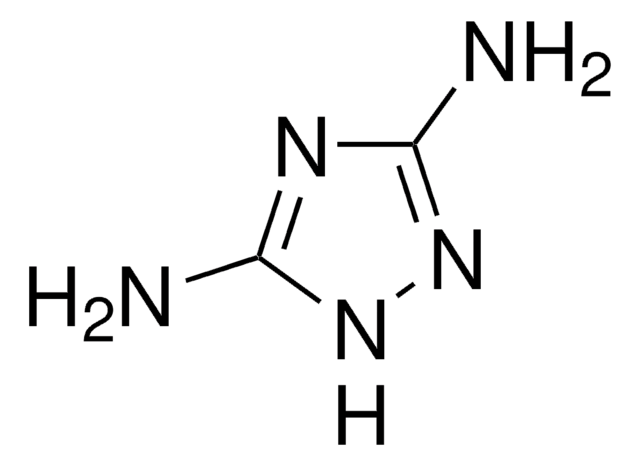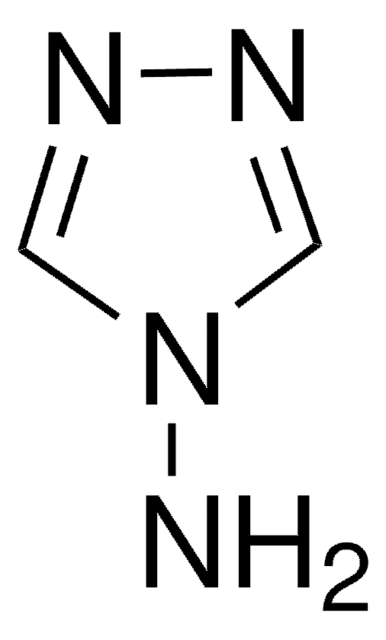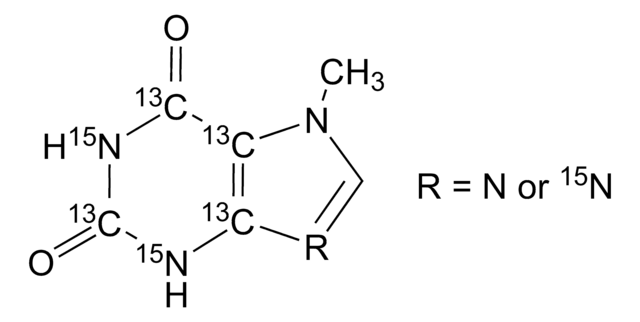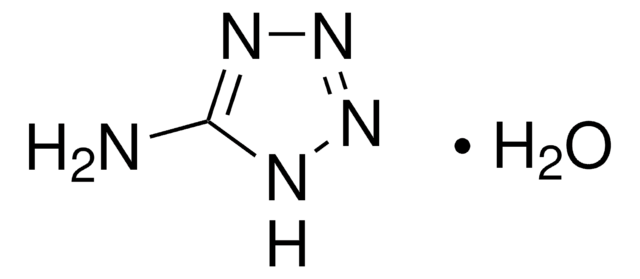추천 제품
제품명
3-Amino-1,2,4-triazole, ≥95% (TLC)
생물학적 소스
synthetic (organic)
Quality Level
분석
≥95% (TLC)
양식
powder
효능
30 μM Ki
mp
150-153 °C (lit.)
solubility
water: 50 mg/mL, clear to slightly hazy, colorless to faintly yellow
저장 온도
−20°C
SMILES string
Nc1nc[nH]n1
유사한 제품을 찾으십니까? 방문 제품 비교 안내
관련 카테고리
일반 설명
애플리케이션
신호어
Warning
유해 및 위험 성명서
Hazard Classifications
Aquatic Chronic 2 - Repr. 2 - STOT RE 2
Storage Class Code
11 - Combustible Solids
WGK
WGK 2
Flash Point (°F)
Not applicable
Flash Point (°C)
Not applicable
개인 보호 장비
Eyeshields, Gloves, type P3 (EN 143) respirator cartridges
이미 열람한 고객
자사의 과학자팀은 생명 과학, 재료 과학, 화학 합성, 크로마토그래피, 분석 및 기타 많은 영역을 포함한 모든 과학 분야에 경험이 있습니다..
고객지원팀으로 연락바랍니다.











![5-Amino-1H-[1,2,4]-triazole-3-carboxylic acid methyl ester 96%](/deepweb/assets/sigmaaldrich/product/structures/343/124/fed9a51c-601d-495f-8ded-bd63502da7ca/640/fed9a51c-601d-495f-8ded-bd63502da7ca.png)
